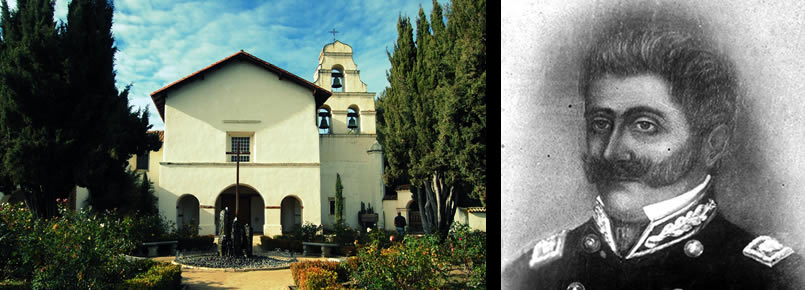

American Latino Heritage
El Santuario de Chimayo
New Mexico
 |
El Santuario de Chimayo, 1918, |
Pueblo Indians have inhabited the Chimayo area since the 12th century, long before the initial Spanish conquest of New Mexico. When they arrived, the Spanish committed to converting the natives to Christianity, which became a major point of friction between the Catholic Church and the American Indians. In 1680, the Pueblo Indians revolted temporarily ending Spanish commitment to the region. The Tewa Indians named Chimayo as “Tsi-Mayoh,” after one of four sacred hills above the valley, which lies directly behind El Santuario de Chimayo. The Pueblo Indians believed that they shared their land with supernatural beings. The natives thought the healing spirits were to be found in the form of hot springs, which ultimately dried up leaving the healing earth. The Pueblo and Tewa used the site of El Santuario de Chimayo for healing long before Spanish occupation.
In 1693, led by Diego de Vargas, the Spanish returned to reconquer New Mexico. The Spanish regained control of the area, creating a perpetual flow of Spanish and Mexican settlers to northern New Mexico. The returning and newly arrived Hispanic families dispersed along the Santa Cruz River and in the village of El Potrero, the future site of the shrine. By 1805, commitment to a miraculous Guatemalan image of Christ crucified known as Our Lord of Esquipulas had become popular in El Potrero.
 |
Good Friday Pilgrims wait to enter El Santuario |
The priest set out for Chimayo and carried the Crucifix back to his church in Santa Cruz, placing it in the niche of the main altar. The next morning, the Crucifix was gone and found in its original location in Chimayo. This same process was repeated two more times, and the Crucifix always ended up back in its original location thus making it apparent that Our Lord of Esquipulas wanted to reside in Chimayo. Another legend claims that Don Bernardo Abeyta had a vision while plowing his fields that directed him to dig beneath his plow where he would find earth with great healing powers.
In 1813, on behalf of the residents of El Potrero, Abeyta petitioned the priest for permission to build a chapel dedicated to Our Lord of Esquipulas on what the people believed to be the site of the miraculous Crucifix or earth with healing powers. The miraculous healings grew so numerous it required replacing the chapel with the larger, current shrine in 1816. The healings started as a result of the miraculous earth or sand found under the shrine. It is said that the earth at Chimayo can be mixed with water to make mud and eaten or applied to the skin in order to heal a person of an ailment. Some people take vials of the sand with them as a remembrance of their pilgrimage to Chimayo.
 |
Interior of El Santuario de Chimayo, including numerous religious paintings and statuary. |
The walls of one of the rooms are covered with expressions of thanks for the cure of ailments. Discarded canes, braces, and wheelchairs hanging from the walls of this room are considered proof of the miracles of El Santuario. The other small room contains “el pocito,” a small pit of holy dirt that many characterize as possessing remarkable curative powers. Over the years, the people more commonly attribute healings in Chimayo to el pocito than to the Crucifix. Built in 1856, the Shrine of Santa Nino de Atocha is within walking distance. United States soldiers and sailors who prayed to the Santo Nino during the notorious Bataan Death March originally started the Easter pilgrimage to the site. In 1945, US servicemen who survived the Bataan Death March began a tradition of walking to El Santuario to thank Santo Niño de Atocha for “delivering them from evil.” The tradition of pilgrimages has grown stronger over the years, and now many thousands of people begin or end pilgrimages at El Santuario.
El Santuario remained in the ownership of the descendants of Bernardo Abeyta until 1929, when the Spanish Colonial Arts Society in Santa Fe that writer Mary Austin, artist Frank Applegate and architect/preservationist John Gaw Meem headed, purchased it from the family and donated it to the Archdiocese of Santa Fe.
| Plan your visit |
El Santuario de Chimayo, a National Historic Landmark, is located on NM 76 (the High Road) in the town of Chimayo, NM. Click here for the National Historic Landmark file: text and photos. The shrine is open daily from dawn to dusk. Mass takes place at 11:00 AM Monday through Saturday and at 10:30 AM and noon on Sunday. For more information, visit the El Santuario de Chimayo or Archdiocese of Santa Fe websites or call 505-351-4889. El Santuario de Chimayo is also featured in the National Park Service American Southwest Travel Itinerary. |